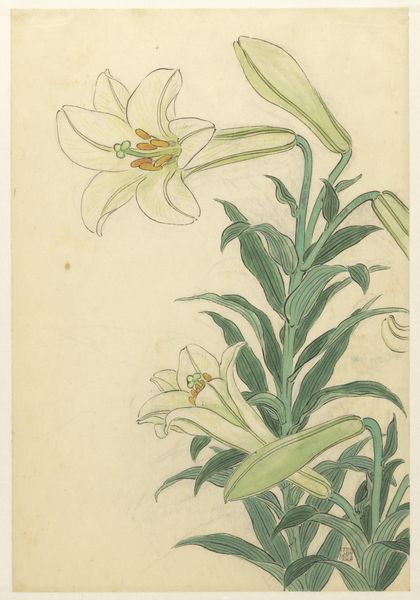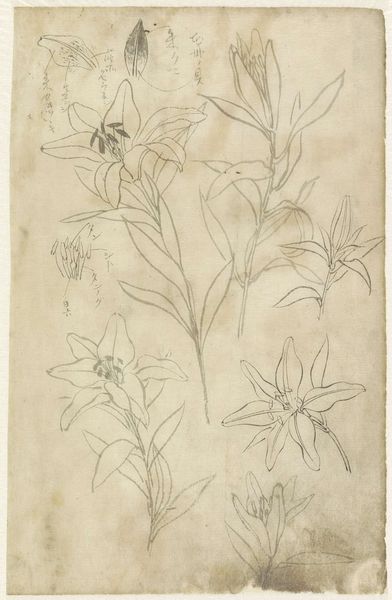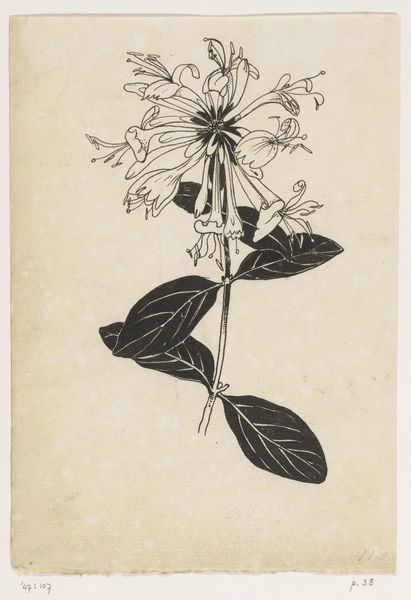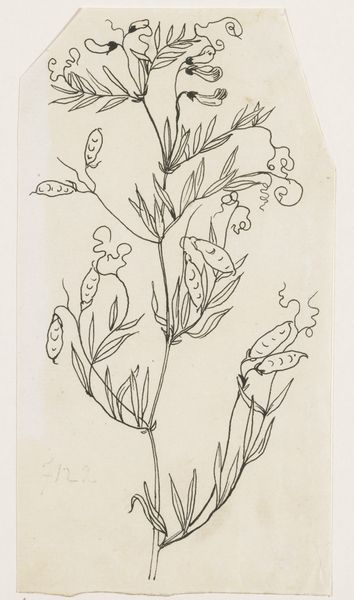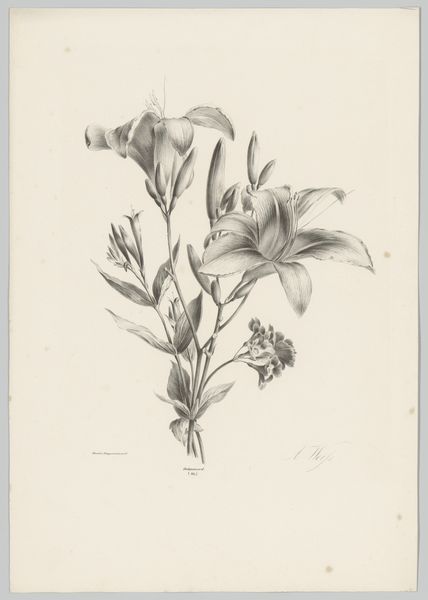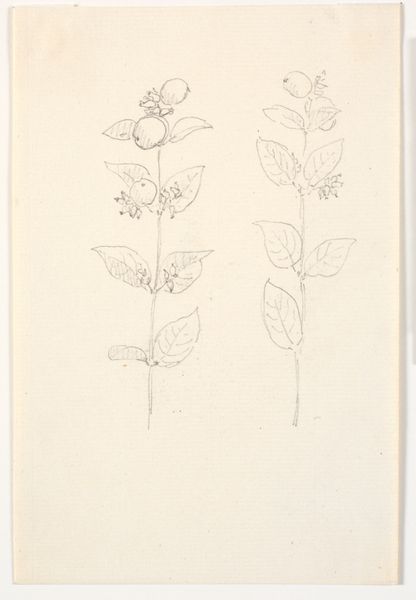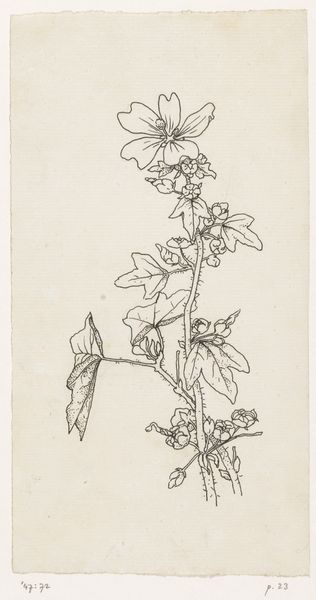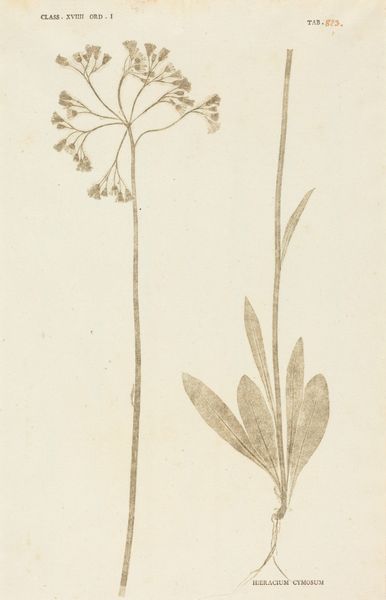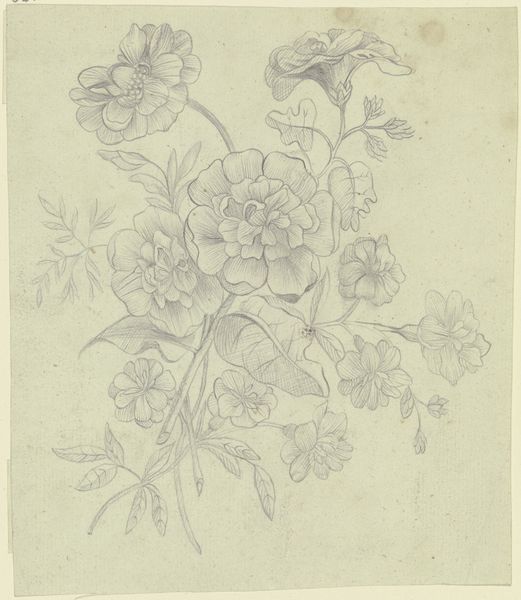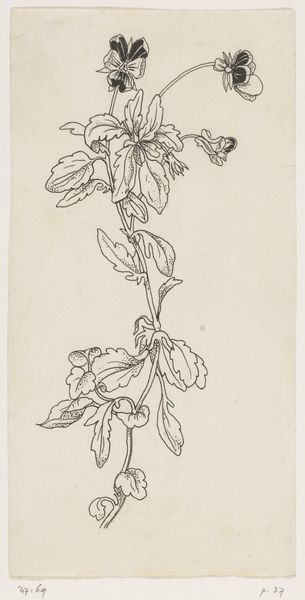
Dimensions: height 323 mm, width 220 mm
Copyright: Rijks Museum: Open Domain
Curator: "Lelies," or Lilies, by Ohara Koson, a woodcut print created sometime between 1920 and 1930. What strikes you about it initially? Editor: Well, first impression, it feels quite stark. The linear quality, the monochrome…it's a reduction of the lily, stripping away color to emphasize form. It also seems a relatively minimal image compared to other works from that time period. Curator: Indeed. Koson, deeply rooted in the Ukiyo-e tradition, adapted to the changing times. We see realism coexisting with stylized elements that reference centuries of symbolism associated with the lily itself—purity, rebirth, even death. Think about the geometric perfection within each bloom. Editor: Which comes down to material practice, doesn't it? The labour involved in creating this print fascinates me. Consider the process of carving a woodblock, the registration required for multiple colors if he'd chosen that. Curator: And he consciously chose ink and paper. The texture invites closer inspection. In its apparent simplicity, the piece possesses an enduring quality—almost a form of visual koan. Its pared-down aesthetic perhaps is also an exploration of life's delicate, ephemeral beauty, akin to a meditation. Editor: Yes! Each deliberate line, cut into the wood, creates both depth and form, speaks to the value placed on craftsmanship, on meticulous skill. There's beauty in that repetition, that labor itself becomes a meditative practice. Curator: Right, as the blossom unfolds to reveal the reproductive organs, the symbolism inherent is echoed through repetition of process in bringing an image from one form to another—almost rebirth into itself, again and again. Editor: Absolutely. Viewing it from a contemporary perspective, it bridges that gap between what we consider "high art" and craft, highlighting how materials and labour inform each other, creating the experience. Curator: In summary, the visual vocabulary speaks eloquently through its sparseness. There is complexity in Koson's "Lelies," from process to potent metaphor, reminding us of enduring symbols over time. Editor: Precisely. Koson challenges the norms through this work by proving how a singular vision with carefully chosen media is very potent.
Comments
No comments
Be the first to comment and join the conversation on the ultimate creative platform.
